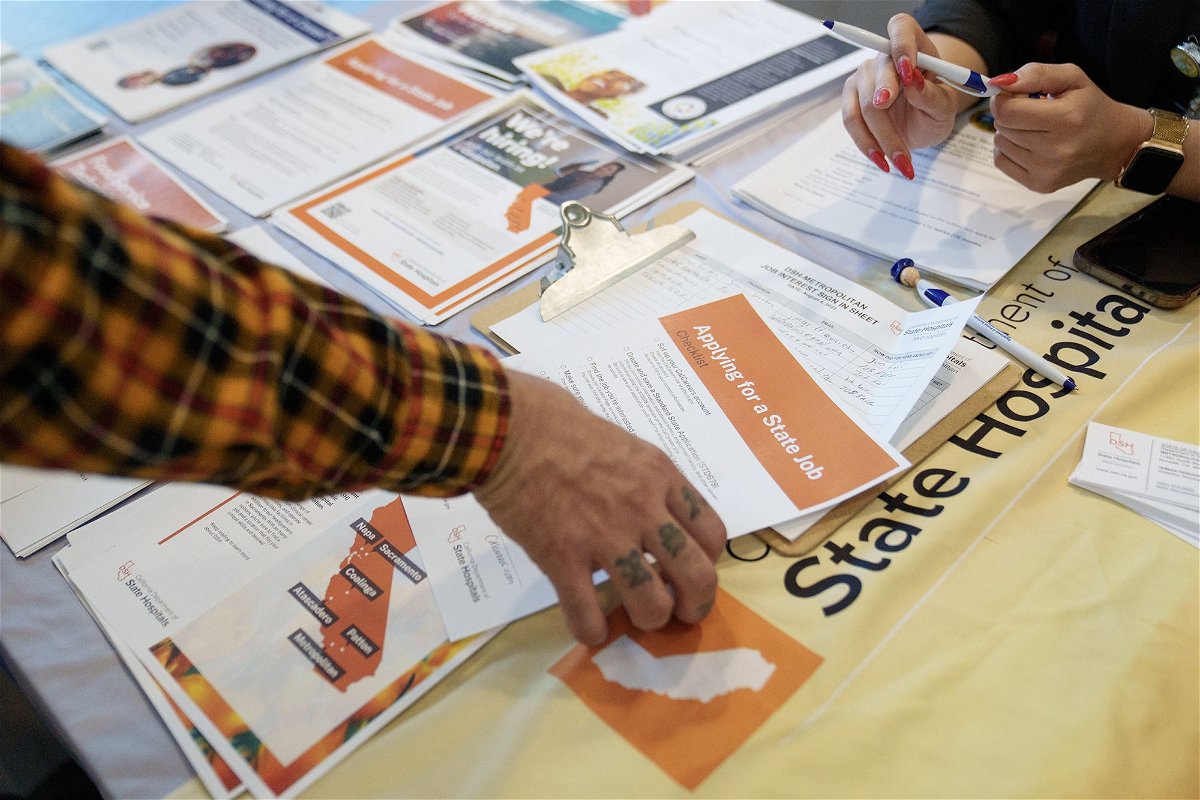March jobs report comes in hot: The US economy added 303,000 positions last month

By Alicia Wallace, CNN
New York (CNN) — For all intents and purposes — and by most economists’ predictions — job growth was supposed to slow by now, as the pandemic recovery grew complete. The US labor market also was supposed to weaken under the pressure of 11 interest rate hikes.
Instead, on Friday, yet another jobs report defied expectations.
Employers added 303,000 jobs in March, the Bureau of Labor Statistics reported. The unemployment rate fell to 3.8% from 3.9% the month before.
Friday’s jobs report not only highlights the US labor market’s remarkable resilience in the face of high interest rates and elevated inflation, but also shows that amid this enduring strength, inflation pressures are easing.
Annual wage gains slowed to 4.1% from 4.3%, a trajectory likely welcomed by the Federal Reserve in its efforts to tame inflation but yet a still-strong rate to help Americans recapture earnings that were decimated by the pandemic and high inflation.
“Today’s jobs report raises the possibility that rather than slowing down, job growth might be holding steady,” Nick Bunker, Indeed Hiring Lab’s economic research director for North America, said in a statement. “But this strength is coming from sources that are more sustainable than those that fueled the burst of gains in 2021. March’s jobs numbers were uniformly strong, and upticks in the employment-population ratio and labor force participation in particular suggest that demand for workers is not outstripping supply, like it was a few years back.”
Historic gains
The total far surpassed economists’ forecasts for 205,000 jobs gained, according to FactSet consensus estimates. The jobless rate was projected to fall from 3.9% to 3.8%.
Last month’s job growth was driven by industries such as health care (+72,300 jobs); government (+71,000 jobs); leisure and hospitality (+49,000 jobs); and construction (+39,000 jobs).
The current US job market is also one of the strongest, historically: The economy has added jobs for 39 consecutive months, marking the fifth-longest period of job expansion on record, BLS data shows. The unemployment rate has been below 4% for 26 months in a row, the longest streak since the late 1960s.
President Joe Biden touted March’s jobs report Friday.
“Today’s report marks a milestone in America’s comeback,” Biden said in a statement released by the White House Friday morning. “Three years ago, I inherited an economy on the brink. With today’s report of 303,000 new jobs in March, we have passed the milestone of 15 million jobs created since I took office. That’s 15 million more people who have the dignity and respect that comes with a paycheck.”
The economy remains a critical issue for the president as he seeks reelection. In his State of the Union address, the president vowed to raise taxes on corporations and lower everyday costs, including junk fees and prescription drug prices.
March’s jobs report also marked a significant milestone in the pandemic recovery: The leisure and hospitality industry — decimated by lockdowns and subsequent shifts in where people lived and worked and how they spent — reached its pre-pandemic employment levels.
A hotter-than-anticipated jobs report, combined with a recent batch of bumpy inflation data, could further complicate the Federal Reserve’s fight to rein in fast-rising prices, including potentially delaying rate cuts, Greg Daco, chief economist at EY-Parthenon, told CNN Business on Thursday.
However, in addition to the monthly job creation numbers, the Fed also will be looking closely at data such as the pace of wage growth and hours worked, he said.
In March, average hourly earnings increased 0.3% from February and slowed to 4.1% annually. The average workweek ticked higher to 34.4 hours, and the labor force participation rate grew to 62.7%, up from 62.5%.
This story is developing and will be updated.
The-CNN-Wire
™ & © 2024 Cable News Network, Inc., a Warner Bros. Discovery Company. All rights reserved.
CNN’s Samantha Waldenberg contributed to this report.
